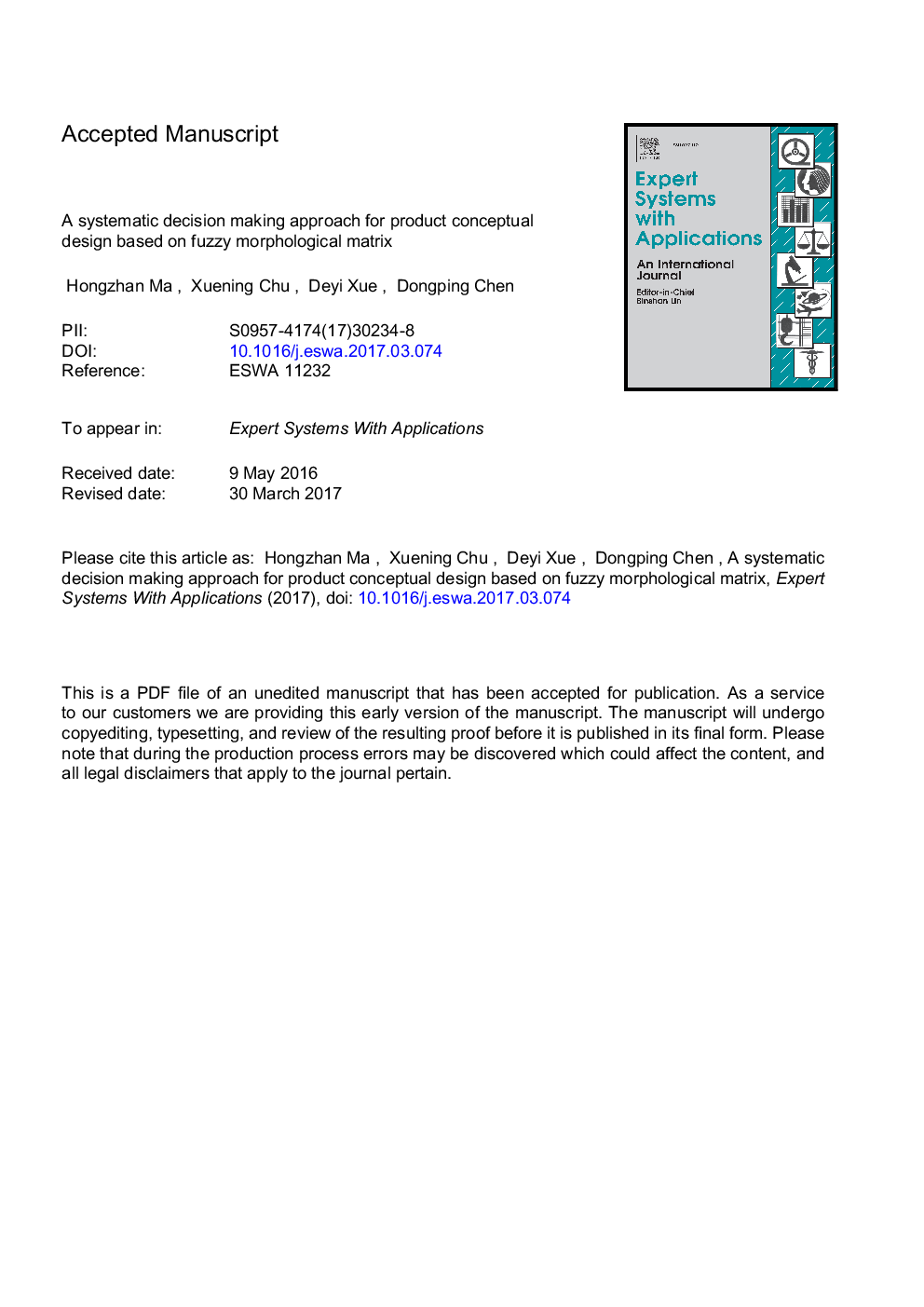| کد مقاله | کد نشریه | سال انتشار | مقاله انگلیسی | نسخه تمام متن |
|---|---|---|---|---|
| 4943373 | 1437625 | 2017 | 32 صفحه PDF | دانلود رایگان |
عنوان انگلیسی مقاله ISI
A systematic decision making approach for product conceptual design based on fuzzy morphological matrix
ترجمه فارسی عنوان
روش تصمیم گیری سیستماتیک برای طراحی مفهومی محصول بر اساس ماتریس مورفولوژیکی فازی
دانلود مقاله + سفارش ترجمه
دانلود مقاله ISI انگلیسی
رایگان برای ایرانیان
کلمات کلیدی
FPCRPNQFDFCMFMEAFCRDSMTFn - TFNTriangular fuzzy numbers - اعداد فازی مثلثیcustomer preference - اولویت مشتریFuzzy multi-objective optimization - بهینه سازی چند هدف فازیFailure mode and effects analysis - حالت شکست و تجزیه و تحلیل اثراتRisk Priority Number - شماره اولویت خطرconceptual design - طراحی مفهومیdesign structure matrix - ماتریس ساختار طراحیCustomer requirement - نیاز مشتریQuality function deployment - گسترش عملکرد کیفیت
موضوعات مرتبط
مهندسی و علوم پایه
مهندسی کامپیوتر
هوش مصنوعی
چکیده انگلیسی
Conceptual design plays an important role in development of new products and redesign of existing products. Morphological matrix is a popular tool for conceptual design. Although the morphological-matrix based conceptual design approaches are effective for generation of conceptual schemes, quantitative evaluation to each of the function solution principle is seldom considered, thus leading to the difficulty to identify the optimal conceptual design by combining these function solution principles. In addition, the uncertainties due to the subjective evaluations from engineers and customers in early design stage are not considered in these morphological-matrix based conceptual design approaches. To solve these problems, a systematic decision making approach is developed in this research for product conceptual design based on fuzzy morphological matrix to quantitatively evaluate function solution principles using knowledge and preferences of engineers and customers with subjective uncertainties. In this research, the morphological matrix is quantified by associating the properties of function solution principles with the information of customer preferences and product failures. Customer preferences for different function solution principles are obtained from multiple customers using fuzzy pairwise comparison (FPC). The fuzzy customer preference degree of each solution principle is then calculated by fuzzy logarithmic least square method (FLLSM). In addition, the product failure data are used to improve product reliability through fuzzy failure mode effects analysis (FMEA). Unlike the traditional FMEA, the causality relationships among failure modes of solution principles are analyzed to use failure information more effectively through constructing a directed failure causality relationship diagram (DFCRD). A fuzzy multi-objective optimization model is also developed to solve the conceptual design problem. The effectiveness of this new approach is demonstrated using a real-world application for conceptual design of a horizontal directional drilling machine (HDDM).
ناشر
Database: Elsevier - ScienceDirect (ساینس دایرکت)
Journal: Expert Systems with Applications - Volume 81, 15 September 2017, Pages 444-456
Journal: Expert Systems with Applications - Volume 81, 15 September 2017, Pages 444-456
نویسندگان
Ma Hongzhan, Chu Xuening, Xue Deyi, Chen Dongping,
